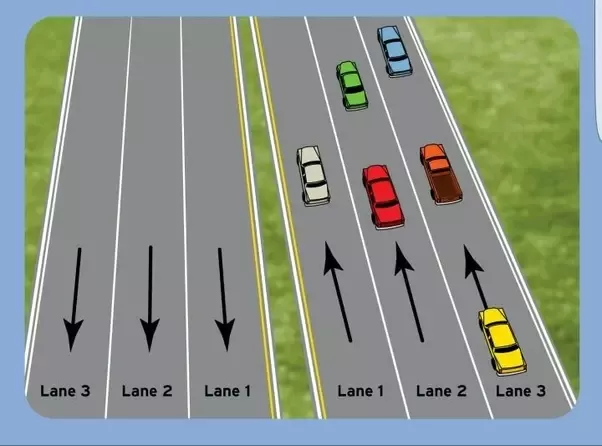
Left lane hogging is a frustrating experience for many drivers. It disrupts the flow of traffic and can lead to dangerous situations. This article will delve into the issue of why do people drive slow in the left lane, exploring the rules of the road, the dangers associated with this behavior, and safe driving practices to ensure a smoother and safer driving experience for everyone.
We’ll examine the definition of left lane hogging, clarify the proper usage of lanes according to traffic laws, and highlight the potential risks it poses to other drivers. Additionally, we’ll discuss strategies for safe driving that promote efficient traffic flow and minimize congestion.
Left Lane Hogging Defined
Left lane hogging, also known as “slow lane hogging,” occurs when a driver consistently maintains a slow speed in the left lane of a multi-lane road, impeding the flow of faster-moving traffic. This behavior is often perceived as inconsiderate and can lead to frustration and road rage among other drivers.
While some drivers may be unaware of proper lane etiquette, others intentionally use the left lane for extended periods, even when not actively passing. This can create a bottleneck, forcing faster vehicles to either slow down or dangerously maneuver around the slower vehicle in the left lane.
Left lane hogging is not only an annoyance but can also be a safety hazard. It can lead to tailgating, aggressive driving, and increased risk of accidents.
Rules of the Road for Lane Usage

Traffic laws generally dictate that the left lane is designated for passing slower vehicles. Once a driver has completed a pass, they are expected to move back to the right lane to allow faster traffic to flow freely.
Most jurisdictions have specific regulations regarding lane usage, often outlined in their driver’s manuals. These regulations typically emphasize the importance of staying in the right lane unless actively passing and encourage drivers to yield to faster-moving vehicles in the left lane.
Failing to adhere to these lane usage rules can result in traffic violations and fines.
Passing Etiquette
When passing another vehicle, it’s crucial to ensure a safe and legal maneuver. This involves checking blind spots, signaling your intentions, and maintaining a safe following distance.
It’s important to note that passing on the right is generally not permitted unless there are designated passing lanes or the vehicle ahead is turning left.
Dangers of Left Lane Hogging
Left lane hogging poses several dangers to other drivers on the road.
Tailgating
When a vehicle is driving slowly in the left lane, it can cause frustration and lead to tailgating by faster-moving vehicles. Tailgating significantly increases the risk of rear-end collisions, as drivers following too closely have less time to react to sudden stops or changes in traffic flow.
Aggressive Driving
Left lane hogging can also contribute to aggressive driving behaviors. Frustrated drivers may engage in speeding, weaving in and out of traffic, or honking aggressively, increasing the likelihood of accidents.
Reduced Visibility
Driving slowly in the left lane can obstruct the view of other drivers, particularly those behind. This reduced visibility can make it more difficult to judge distances and react to potential hazards, increasing the risk of collisions.
Safe Driving Practices

Practicing safe driving habits is essential for maintaining a smooth and efficient flow of traffic and ensuring the safety of all road users.
Stay in the Right Lane
Unless actively passing, drivers should always stay in the right lane. This allows faster-moving vehicles to utilize the left lane for overtaking and helps maintain a consistent flow of traffic.
Be Aware of Your Speed
It’s crucial to be aware of your speed and adjust it accordingly to the flow of traffic. Driving too slowly in the left lane can impede the flow of traffic and create hazards.
Signal Your Intentions
Always signal your intentions clearly when changing lanes or passing. This gives other drivers ample time to react and avoid potential collisions.
Maintain a Safe Following Distance
Keeping a safe following distance is essential for safe driving. It allows you to react to sudden stops or changes in traffic flow and reduces the risk of rear-end collisions.
Avoiding Traffic Congestion
Traffic congestion can be a major source of frustration and delays. By following safe driving practices and adhering to lane usage rules, drivers can contribute to smoother traffic flow and reduce congestion.
Avoid Rush Hour
If possible, avoid driving during peak rush hour periods when traffic is typically heaviest.
Plan Your Route
Planning your route in advance can help you avoid congested areas and identify alternative routes.
Use Navigation Apps
Navigation apps can provide real-time traffic updates and suggest alternative routes to avoid congestion.
Conclusion
Left lane hogging is a common traffic annoyance that can lead to dangerous situations. Understanding the rules of the road, practicing safe driving habits, and being mindful of other drivers are crucial for maintaining a smooth and efficient driving experience. By staying in the right lane unless passing, being aware of your speed, signaling your intentions, and maintaining a safe following distance, drivers can contribute to safer and less congested roads for everyone.
